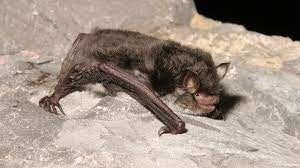2-3 WORKING DAY DELIVERY

Understanding Bats and the regulations that surround them
Encountering bats in roof spaces is not uncommon for roofers. Bats are protected species in many countries, including England, and are subject to specific regulations to ensure their conservation and welfare. This article aims to educate roofers and home owners on the regulations concerning bats enforced by Natural England and provide guidance on the appropriate actions to take when bats are discovered in a roof space.
Understanding Bat Species:
18 different species of bats live in the UK, 17 of which are a British Species.
In Derbyshire the most common bat is the common pipistrelle bat -



Legal Framework:
Bats are protected under the Wildlife and Countryside Act 1981 (as amended) and the Conservation of Habitats and Species Regulations 2017.
Natural England is the governing body responsible for enforcing these regulations.
It is illegal to:
Intentionally or recklessly disturb bats.
Damage, destroy, or obstruct access to bat roosts.
Capture, kill, or handle bats without appropriate licenses.
Penalties for violating these regulations can include fines and imprisonment.
Recognizing Bat Roosts:
Bat roosts can be found in various locations, including roof spaces, attics, and tree cavities.
Signs of bat presence may include droppings (guano), urine stains, rub marks, and fluttering noises.
Bats are nocturnal, so sightings during the day may indicate potential roost locations.
Responding to Bat Discoveries:
If bats are found in a roof space:
Cease work immediately in the area where bats are present.
Do not disturb the bats or their roost.
Contact Natural England Bat Helpline at 0345 1300 228 to report the discovery and ask for guidance.
Avoid handling bats or attempting to remove them without proper authorization.
Do not block or seal entry points to the roost, as this could trap bats inside.
Obtaining Licenses:
When site visits are conducted the roofing company will ascertain if there is bats currently living in the building from the homeowner and a visual check for bat droppings in loft areas where open. Sometimes bats may live in the roof area without the knowledge of the property owner.
Certain activities, such as roofing works that may disturb bats or their roosts, require a license from Natural England.
Roofers must apply for a mitigation license if their work is likely to impact bat roosts.
Licenses are issued based on the necessity of the proposed activity and the measures taken to minimise harm to bats.
Mitigation Measures:
Always start with the assumption that bats are present in a building or the surrounding site, unless a bat survey within the last 2 years shows that no bats or signs of bats are present.
Plan all works well in advance so that a bat survey can be carried out and the works progressed when least disturbance will be caused to the bats.
If roofing works are deemed necessary in an area with bat roosts, mitigation measures may include:
Conducting works outside the breeding season (typically between September and March).
Installing bat boxes or alternative roosting sites nearby to compensate for lost habitat.
Implementing temporary exclusion devices to allow bats to exit the roost before work begins.
Employing licensed ecologists to oversee and monitor the project.
Areas where Bats can gain access to a house:

A Weather-tight roof roof is, of course, essential to both buildings and their interiors. Regular inspection and maintenance of the roof covering, structure and rain water goods will increase their life span, reduce the loss of historic materials and the frequency of more major works and costly re-roofing works. Not surprisingly, such working practices also benefit bats.
Many bat roosts in buildings are in roofs, and almost all UK species have been found in them.
Horseshoe bats hang in exposed positions from beams inside the roof void, but other species may tuck deep into crevices and may not be visible. In almost all cases, the bats will be in a dark area.
Points and Places used by Bats
Common roosting places are –
Between the outer roof covering and any lining (especially wooded boards / sarking, but also tarred felt)
Under lead flashings, such as around chimney stacks
Around any heated flue / chimney stack that exits through the roof
Under ridge tiles, but above ridge battens, and any roofing felt
Under roopfing tiles, stone slate and pan tiles
Along (on top and hanging from) the ridge line
Inside the box structure of flat roofs
Behind fascia boards
Under eaves or verge / on top of wall
Behind hanging tiles such as on a dormer windows and gable ends
Inside the opened joints of roof timbers
To access the roof void, horseshoe bats fly in through relatively large openings (large as in open hay loft doors, broken windows, and bell tower louves, for example) but other speciaes squeeze through very narrow gaps (as little as 15mm). Such points of entry are hard to locate, but are often found in roof areas –
Between the soffitt / fascia boards and building wall (especially at gable ends)
Under lead flashings
Under ridge tiles
Under lifted / warped / broken slates and tiles
Around dormer windows
Gaps where two roofs join
Through mortar gaps or cracks in the top of the wall
Bat Safe Products for use in roofs- (these will enable bat access and materials that will make the roof to a livable area)




Natural England has changed the control of underlays and bats.
In summary –
Roof felts and linings
Roofing underlays are normally installed in old roofs when they are re-tiled or re-slated. The main purpose of the underlay is to reduce wind uplift, and a second line of defence against rain. They also help to keep the roof dry during re-roofing thereby avoiding the need for a temporary roof.
For over 70 years the material commonly used for underlay was impermeable bituminous felt (conforming to BS747; Type 1F). Type 1F bituminous felt worked well if the roof space was adequately ventilated, and it was good for bats as it created a dark environment and a rough surface to hang from or crawl along.
What is 1F roofing felt?
This traditional roofing felt has a long history, manufactured for over 35 years and over 9 million m/2 successfully installed, using fibre bases saturated and coated in oxidised bitumen, which makes Type 1F the only bat safe felt on the market.
However, in recent years Type 1F felt has been largely supplanted by low vapour resistance (‘breathable’) underlays. These are meant to let excess moisture vapour escape from unventilated roof voids, while acting as a barrier to liquid water penetration from outside. These membranes also need ventilation to work effectively.
Most low vapour resistance underlays (and their non-permeable (non-breathable) counterparts) are made up of layers of non-woven, heat-bonded synthetic filaments. These filaments are long and strong and bats can become entangled in them when their sharp claws pull the filaments from the underlay. In contrast, there have been few reports of bats being harmed in roofs where Type 1F underlay has been used. There are also concerns about the long term effects on bat roosts of changes in the roof environment where Type 1F underlay is replaced with a ‘breathable’ membrane.
At present, the only roofing underlay that is allowed by Natural England and the other UK statutory nature conservation organisations to be used in a bat roost is hessian-reinforced bitumen Type 1F felt.
The Bat Conservation Trust is actively involved in ongoing research into the safety of roofing membranes.
When using Type 1F underlay, to comply with Building Regulations it is important to provide appropriate vents to control the risk of condensation on the underside of the felt. These vents can also provide access points for bats. If you are using traditional mortar torching instead of an underlay, a consultation with a bat specialist to incorporate openings so bats can continue to enter the roof void from outside would be needed.
Treating timber and 'bat appropriate' chemicals
If timber requires treatment, you should first carry out a bat survey. A specialist timber consultant should be commissioned to diagnose and treat timber in traditional buildings and he/she will need a copy of the bat survey report.
The first question to consider is whether the timber needs treating at all.
- Is the problem current or historic? If historic, then treatment is not generally necessary; the existence of insects' flight holes in structural timber or furniture does not necessarily mean the infestation is still live.
- What is the extent of the damage? Usually only the soft outer part of the timber (sapwood) is attacked by wood-boring insects, unless the heartwood has been modified by fungal attack or has little natural durability. In many roof structures, the strength lies in the heartwood so minor outer damage may not require treatment.
- Do you need to solve an underlying problem? The dry rot and wet rot fungi that destroy wood need a narrow range of conditions of moisture, temperature and humidity. Whichever type of rot you have, first stop the water ingress which has caused the damp conditions which the fungus needs to survive. Allow the environment to dry out and the moisture levels in the affected timber to reduce before assessing whether further work is needed. Replacing the timber or applying a chemical without solving the source of damp would treat the symptom but not the cause, and the problem would be likely to recur.
- If you have to treat any unfixed furniture or movable fittings, move and treat them outside so that no fumes reach the bats.
Some remedial timber treatments, including ‘bombs’ and fogging systems, are harmful to bats if they are exposed directly to them. This is a particular problem on roof timbers as bats often roost on the wood itself. Vapours from treatments used on lower floors and joists, however, may also affect bats roosting at roof level. Treatments which use petroleum products to spread the pesticide and aid its penetration are especially likely to release vapours that could harm or disturb bats.
Bats can also be harmed from contact with timber treatment residues as they regularly groom themselves.
Natural England publishes a list of timber-treatment chemicals suitable for use in or near bats –
Ashbrook Roofing carries in stock the Sovereign products which Natural England consider Bat safe (see below) -
|
Sovereign Chemicals Ltd |
Sovaq Woodworm Killer (BPR) |
Mc |
Professional |
Permethrin |
10125 |
UK-2019-1171-2-0002 |
|
Sovereign Chemicals Ltd |
Sovereign Boron Timber Rod |
R |
Professional |
Disodium octaborate |
|
UK-2013-0798 |
|
Sovereign Chemicals Ltd |
Deepkill Timber Preservative Cream |
Pa |
Amateur |
Propiconazole, IPBC, Permethrin |
10149 |
|
|
Sovereign Chemicals Ltd |
Sovaq Dual Purpose Timber Treatment |
Mc |
Professional |
Propiconazole, IPBC, Permethrin |
10126 |
UK-2019-1194-1-0002 |
|
Sovereign Chemicals Ltd |
Sovereign Timber Preservative |
S |
Amateur |
Propiconazole, IPBC |
|
UK-2016-1021 |
Training and Awareness:
Roofers play a crucial role in safeguarding bat populations by adhering to regulations and implementing appropriate mitigation measures. By understanding the legal framework, recognising bat roosts, and following proper procedures, roofers can effectively protect bats while carrying out their work.
Bats can be found in all kinds of buildings, usually in the roof but also in other areas. All Roofers should be aware that any roof or building is a potential bat roost and should therefore check automatically for the presence of bat droppings or bats. In a small roof, five minutes spent specifically on this check would find any established roost but in a larger building about the same time should be spent on each roof section. The search can then be continued at the same time as other work, as most of the areas where bat droppings may be found are those that will be examined for signs of rot or insect attack.
A suggested search technique for houses is:
- Ask the occupier whether they are aware that they have bats or if bats have ever been found in the house
- Check for the presence of bats by listening for their 'chittering' noises in warm weather and by shining a light along the ridge beams and over brickwork. However, it must be stressed that bats are rarely seen during the day
- Examine the floor for droppings, concentrating on the area beneath the ridge, the junction between two ridges, down hips and over bays, around chimneys and gables and all around the eaves.
Much of this can be done during the course of a normal roof survey
If evidence of bats is found in a dwelling-house and any action is proposed which would affect bats or their roosts, then English Nature must be informed and allowed time to advise on any special precautions that may be necessary. Such actions would include renovation, demolition, re-roofing, conversion or any application of pesticides for remedial timber treatment.
Avoiding the unnecessary killing of bats or destruction of their roosts can best be achieved through early consultation, preferably at the survey stage, but in urgent cases advice can often be provided by telephone.
Churches and other large non-domestic buildings may require a different technique, but the same principles apply. Ask staff about bats and check for droppings on walls, floors, pews, altar cloths etc. If signs of bats are found, consult DEFRA about possible licensing requirements.
Further information is available from the Bat Conservation Trust.
Bat Droppings Guide
The discovery of bat droppings is the most common method to prove the presence of a bat roost.
British bats are entirely insectivorous and so their droppings only contain the indigestible parts of their insect prey. This content gives their droppings a crumbly texture which allows them to be differentiated from mouse droppings, which look similar but become very hard when dry.
The characteristics of the droppings i.e. the shape, size and texture, can help to identify the bat species that produced it. You can also use the placement of the droppings (i.e. stuck to a wall or below a beam) to assist in the identification.
Below are some examples of the most commonly encountered bats in South Wales and the UK. If you wish to learn more, the Bat Conservation Trust has produced a pocket-sized guide which is ideal for carrying with you while out surveying. Alternatively, you can read ‘Which Bat Is It’, 1986 Stebbings Robert et al.
Pipistrelle Bats
These droppings are fine in texture, approximately 1.5-2mm wide, with a length of 7-9mm. Another useful characteristic is that they usually taper at the ends. It is not possible to conclusively differentiate the three species of pipistrelle present in the UK just by the droppings. However, there are some differences.
Nathusias pipistrelle droppings are very long and thin like a salami sausage. Common pipistrelle droppings are fine and thin with a smooth appearance. They are the size of a grain of rice. Soprano pipistrelle droppings are very similar to those of common pipistrelles but appear to have a slightly larger girth. All of the droppings can be found in small fragments and can be twisted and jointed. Common and soprano pipistrelle droppings can often be found below the entrance point of a roost such as on exterior walls, windows, sills and doors.



Brown Long-eared Bats
These droppings are bumpy, knobbly in structure, approximately 2.5-3mm in width and 8-10mm wide. The droppings are typically in two or three parts. Brown long-eared droppings are usually located in a line below the ridge beam. They are often found with butterfly and moth wings.

Lesser Horseshoe Bats
These droppings usually consist of two or three loosely joined ovoid shaped sections in a row (like a string of sausages). They are often in a curved or crescent shape. They have a total length of 6-8mm and frequently occur below beams, but only in buildings which have large entrances that the bats can fly through. Sometimes the droppings can be deposited singly or in two and can then be confused with pipistrelle droppings.

Greater Horseshoe Bat
Greater horseshoe bat droppings are often in two parts, very friable and often break down very quickly. The droppings can resemble lesser horseshoe droppings but are bigger and often have a pointed end. The droppings can be found with feeding remains of beetles and moths.


Serotine Bats
Serotine droppings are coarse in texture, 3.5-4 mm in width and 8-11mm long. They are generally oval shaped with rounded ends and look a bit like a rugby ball. Some droppings have a small pointy end. They are often shiny and glittery. They can be in one or two parts or unusually three. They are most commonly found below the ridge or around the chimney.

Noctule
Noctule droppings are often matt black in appearance and blunt ended. The droppings often have a strong smell of ammonia when crushed. The species typically roosts in trees and consequently, it can be difficult to collect droppings of this species.

Leisler’s Bat
Leisler’s bat droppings are similar to noctule but smaller in size. They often appear to have a more pointed end. The droppings often look more sparkly and rippled than noctule droppings.

Whiskered and Brandt’s Bat
Whiskered and Brandt’s bat droppings are typically jointed and form a two or three part dropping. They have a smooth appearance and are mostly black in colour. They often have a spliced appearance with an off-set join running at about 45-degrees. They are mostly found scattered within a roof void and can be mistaken for pipistrelle droppings which are typically found within a roof void.


Natterer’s Bat
Natterer’s bat droppings typically have three segments. They are jointed at an offset 45-degree angle. The droppings often have a twisted appearance and look like a plaited rope or a helter-skelter. Small numbers of Natterer’s bats can produce large numbers of droppings. Butterfly and moth feeding remains are often found with the droppings.


Daubenton’s Bat
Daubenton’s bat droppings appear to be mainly found in three segments. The joints are offset at a 45-degree angle. The droppings are typically jet black, long and bulbous. The droppings smell of river plants when fresh. If water is added to the droppings they turn the water a green colour, unlike other droppings which change the colour of the water to brown.

Bechstein’s bat
Bechstein’s bat droppings have a similar appearance to Natterer’s bat droppings.

Greater Mouse-eared bat

Although identifying bat droppings is a good technique to use to get a general idea of which species are present in a roost, it is not infallible. The texture, colour and size of the droppings can change depending on the food available to the bats. The DNA analysis is an option which can provide a definitive answer to the species present. Alternatively, dawn re-entry or dusk emergence surveys can be undertaken so that bat dropping identification can be combined with bat call analysis to get a better picture of the species present.







Stay Connected With US
Address
Harrison Way, Matlock, Derbyshire, DE4 2LF
Email
sales@ashbrookroofing.co.uk
Phone
01629 732988
Order Online
24/7 hours a day
